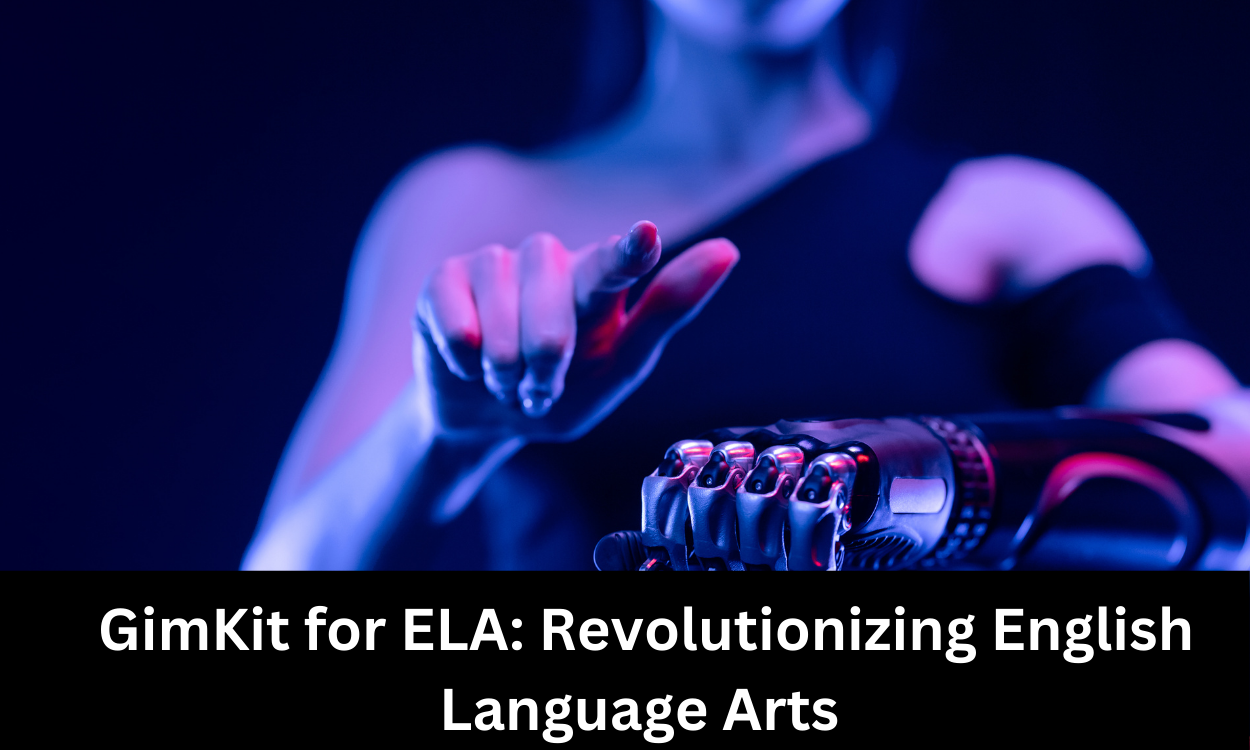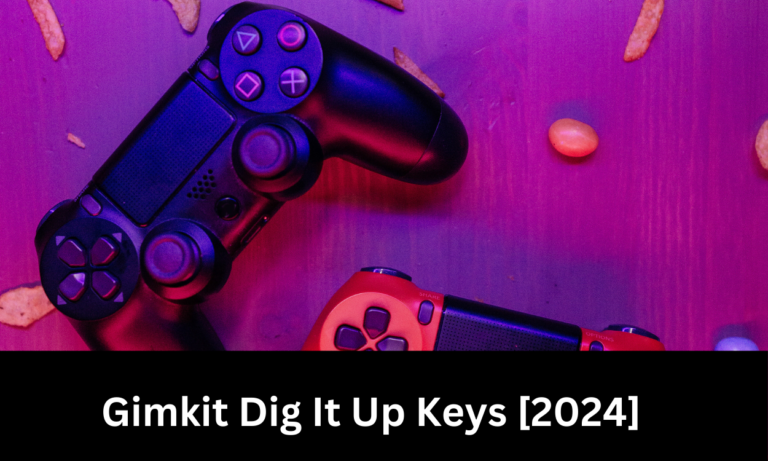GimKit for ELA: Revolutionizing English Language Arts
In the ever-evolving landscape of education technology, GimKit has emerged as a powerful tool for engaging students and enhancing learning outcomes. While it’s widely known for its effectiveness in various subjects, its application in English Language Arts (ELA) has been particularly transformative. This comprehensive guide explores how GimKit is reshaping ELA education, offering insights for educators, students, and parents alike.
What is GimKit?
GimKit is an innovative, game-based learning platform designed to make education more interactive and enjoyable. Created by high school student Josh Feinsilber in 2017, GimKit has quickly gained popularity among educators and students for its unique approach to learning.
Key Features of GimKit
- Interactive Quizzes: At its core, GimKit offers a quiz-based learning experience. However, it’s far from your typical quiz platform.
- Game-Like Elements: GimKit incorporates elements of strategy games, making the learning process more engaging and competitive.
- Real-Time Feedback: Students receive immediate feedback on their answers, allowing for quick correction and reinforcement of knowledge.
- Customizable Content: Teachers can create their own questions or use pre-made sets, tailoring the content to their specific curriculum needs.
- Multiple Game Modes: GimKit offers various game modes, each designed to target different learning styles and objectives.
GimKit in ELA: A Perfect Match
English Language Arts is a broad field encompassing reading, writing, speaking, listening, and language skills. GimKit’s versatile platform proves to be an excellent fit for ELA education, addressing various aspects of the curriculum in engaging ways.
Vocabulary Enhancement
Vocabulary development is a crucial component of ELA education, and GimKit excels in this area.
Contextual Learning
GimKit allows teachers to create sets that present vocabulary words in context, helping students understand not just definitions, but also usage.
Repetition and Reinforcement
The game-like nature of GimKit encourages students to encounter words multiple times, reinforcing their understanding and retention.
Grammar and Syntax
Grammar rules and syntactical structures can be challenging for many students. GimKit makes these concepts more approachable and memorable.
Interactive Exercises
Teachers can design quizzes that focus on specific grammar rules, allowing students to practice in a low-pressure environment.
Error Identification
GimKit’s question formats can be used to present sentences with grammatical errors, challenging students to identify and correct them.
Reading Comprehension
While GimKit isn’t a traditional reading platform, it can be effectively used to enhance reading comprehension skills.
Text Analysis Questions
Educators can create questions based on specific texts, encouraging close reading and analytical thinking.
Theme and Character Exploration
GimKit’s format allows for questions that delve into themes, character motivations, and plot developments, fostering deeper engagement with literature.
Writing Skills
GimKit can be a valuable tool in developing various aspects of writing skills.
Writing Prompts
Teachers can use GimKit to present writing prompts, encouraging students to think creatively and critically.
Editing and Proofreading
Questions can be designed to help students identify common writing errors, honing their editing skills.
Implementing GimKit in ELA Classrooms
Successfully integrating GimKit into ELA curriculum requires thoughtful planning and execution. Here are some strategies for effective implementation:
Lesson Planning with GimKit
- Align with Curriculum Goals: Ensure that GimKit activities are directly tied to your lesson objectives and overall curriculum standards.
- Variety in Question Types: Utilize different question formats to keep students engaged and address various learning styles.
- Progressive Difficulty: Structure your GimKit sets to gradually increase in difficulty, challenging students as they progress.
Collaborative Learning
GimKit’s team modes can foster collaborative learning in ELA classrooms.
Group Discussions
Use GimKit results as a springboard for group discussions, encouraging students to explain their reasoning and learn from each other.
Peer Teaching
Allow students who excel in certain areas to create GimKit sets for their peers, reinforcing their own knowledge while helping others.
Assessment and Feedback
GimKit provides valuable data that can inform your teaching and assessment strategies.
Formative Assessment
Use GimKit as a formative assessment tool to gauge student understanding and identify areas that need more attention.
Personalized Learning Paths
Analyze individual student performance to create personalized learning plans and targeted interventions.
GimKit Game Modes for ELA
GimKit offers several game modes, each with unique potential for ELA education:
Classic Mode
The standard GimKit experience, where students answer questions to earn virtual money and upgrade their in-game abilities.
ELA Application
Ideal for vocabulary drills, grammar practice, and quick literature quizzes.
Trust No One
A collaborative mode where students work together but must also identify a “saboteur” in their midst.
ELA Application
Great for discussions on unreliable narrators in literature or for collaborative story-building exercises.
Farmula
Students grow crops by answering questions correctly, adding a fun, agricultural twist to learning.
ELA Application
Use this mode for long-term vocabulary growth or to track progress in writing skills over time.
Floor is Lava
Players must answer questions correctly to stay on safe platforms and avoid the rising lava.
ELA Application
Excellent for fast-paced grammar drills or quick literature recall exercises.
Enhancing Student Engagement with GimKit in ELA
One of GimKit’s greatest strengths is its ability to boost student engagement. Here’s how it achieves this in ELA contexts:
Gamification of Learning
By turning learning into a game, GimKit taps into students’ natural competitiveness and desire for achievement.
Point Systems and Rewards
The virtual currency system in GimKit motivates students to perform well and continue learning.
Leaderboards
While competition should be handled carefully, leaderboards can inspire students to push themselves and improve their skills.
Immediate Feedback
GimKit’s instant feedback mechanism is crucial for maintaining engagement and facilitating learning.
Error Correction
When students answer incorrectly, they immediately see the right answer, allowing for instant learning and correction.
Positive Reinforcement
Correct answers are celebrated, boosting confidence and encouraging continued participation.
Adaptive Learning
GimKit’s system adapts to each student’s performance, providing a personalized learning experience.
Difficulty Adjustment
Questions become more challenging as students demonstrate mastery, keeping them engaged and pushing their boundaries.
Focus on Weak Areas
The platform identifies areas where students struggle and provides more questions in those topics, ensuring comprehensive learning.
Overcoming Challenges in GimKit ELA Implementation
While GimKit offers numerous benefits for ELA education, there are potential challenges to consider:
Technology Access
Not all students may have equal access to devices or reliable internet connections.
Solutions
- Implement a BYOD (Bring Your Own Device) policy where possible.
- Arrange for school-provided devices during GimKit sessions.
- Consider offline alternatives for students without consistent internet access.
Balancing Digital and Traditional Learning
It’s important to maintain a balance between digital tools like GimKit and traditional ELA instruction methods.
Strategies
- Use GimKit as a supplement to, not a replacement for, core ELA activities.
- Integrate GimKit results into broader class discussions and writing assignments.
- Alternate between digital and non-digital lessons to cater to diverse learning preferences.
Ensuring Meaningful Learning
While GimKit is engaging, it’s crucial to ensure that students are truly learning and not just playing.
Approaches
- Regularly review and update question sets to align with current learning objectives.
- Follow up GimKit sessions with reflective activities or writing assignments.
- Use GimKit data to inform your teaching and identify areas needing more in-depth instruction.
Best Practices for Creating ELA Content in GimKit
To maximize the effectiveness of GimKit in ELA classrooms, consider these best practices when creating content:
Diverse Question Types
Utilize a variety of question formats to address different aspects of ELA learning.
Examples
- Multiple choice for vocabulary and reading comprehension
- True/False for quick grammar checks
- Short answer for more in-depth literary analysis
Contextual Learning
Frame questions within relevant contexts to enhance understanding and retention.
Strategies
- Use excerpts from texts being studied in class as the basis for questions.
- Create scenario-based questions that require application of language skills.
Scaffolded Learning
Structure your GimKit sets to build upon previous knowledge and gradually introduce new concepts.
Implementation
- Start with basic concepts and progressively introduce more complex ideas.
- Include review questions from previous lessons to reinforce long-term retention.
Measuring Success: GimKit’s Impact on ELA Learning
To truly understand the value of GimKit in ELA education, it’s important to measure its impact:
Quantitative Metrics
Look at numerical data to gauge improvement in student performance.
Key Indicators
- Improvement in test scores and grades
- Increased participation rates in class discussions
- Higher completion rates for homework and assignments
Qualitative Assessments
Consider subjective measures of success that may not be captured by numbers alone.
Evaluation Methods
- Student surveys to gauge engagement and perceived value
- Teacher observations of classroom dynamics and individual student progress
- Parent feedback on their child’s attitude towards ELA learning
Long-Term Impact
Assess how GimKit influences students’ overall relationship with ELA subjects.
Long-Term Indicators
- Increased enrollment in advanced ELA courses
- Improved confidence in writing and communication skills
- Greater interest in literature and language-related activities outside of class
The Future of GimKit in ELA Education
As educational technology continues to evolve, so too will the role of platforms like GimKit in ELA classrooms.
Potential Developments
- AI-Driven Content Creation: Advanced algorithms could generate personalized question sets based on individual student needs.
- Virtual Reality Integration: Immersive experiences could bring literature to life, allowing students to explore settings and interact with characters.
- Cross-Curricular Connections: Enhanced integration with other subjects could reinforce the interdisciplinary nature of language skills.
- Adaptive Learning Pathways: More sophisticated tracking of student progress could lead to highly personalized learning journeys.
Conclusion: Embracing GimKit for ELA Success
GimKit represents a powerful tool in the modern ELA educator’s arsenal. By gamifying the learning experience, providing immediate feedback, and offering versatile content creation options, it addresses many of the challenges faced in traditional ELA instruction.
However, like any educational tool, its success ultimately depends on thoughtful implementation. When used strategically, in conjunction with solid pedagogical practices, GimKit can significantly enhance student engagement, improve learning outcomes, and foster a lasting appreciation for the English language and literature.
As we look to the future of ELA education, platforms like GimKit will undoubtedly play an increasingly important role. By embracing these innovative tools while maintaining a focus on core ELA skills and objectives, educators can create dynamic, effective learning environments that prepare students for success in an increasingly language-driven world.





